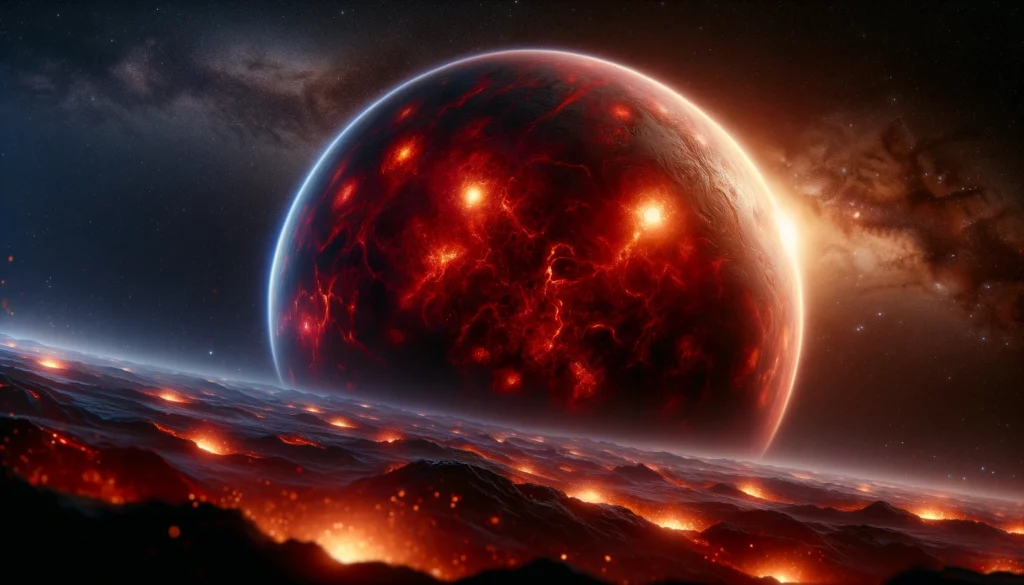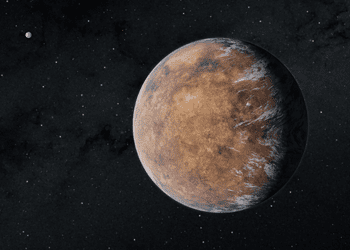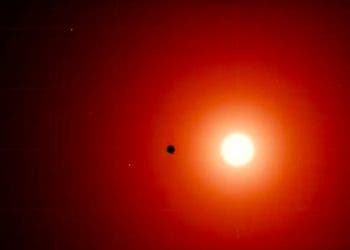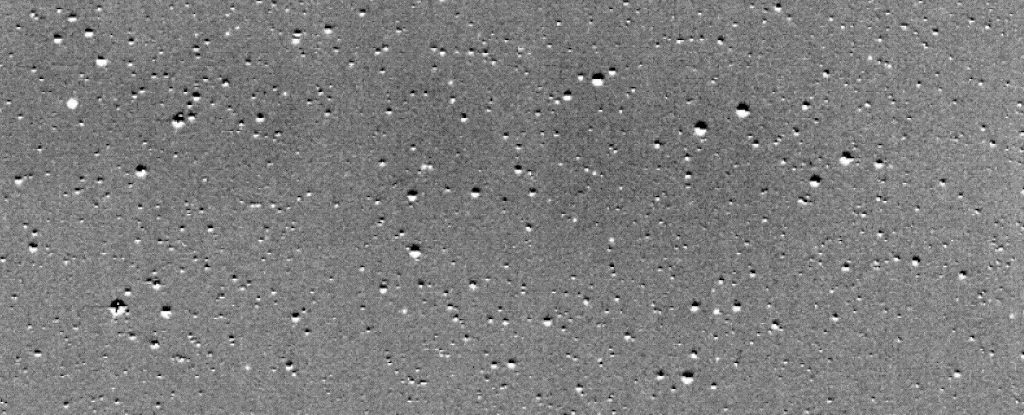
A research team led by University of California Riverside researchers has unveiled a new member of the HD 104067 star system. Located approximately 66 light years from Earth, this is one of the hottest solar systems out there — quite literally.
The newly identified fiery planet, designated TOI-6713.01, exhibits conditions so extreme that its surface temperature surpasses that of some stars, glowing red with molten lava.
The investigation was carried out utilizing data from NASA’s Transiting Exoplanet Survey Satellite (TESS). Researchers initially sought to learn more about a previously discovered giant planet within this system. However, it was the detection of TOI-6713.01 that captured the researchers’ attention, showcasing a world dominated by volcanic activity and extraordinary heat.
Hotter than hot
The planet of interest, a rocky world approximately 30% larger than Earth, has been found to have a surface temperature of 2,600 degrees Kelvin (4,220 degrees Fahrenheit). It’s not quite as hot as the Sun, but it’s hotter than some of the stars we’ve found. For comparison, the temperature on Venus, the hottest planet in our solar system is 880°F (471°C).
“This is a terrestrial planet that I would describe as Io on steroids,” remarked UC Riverside astrophysicist Stephen Kane, referring to Jupiter’s volcanically active moon. “It’s been forced into a situation where it’s constantly exploding with volcanoes. At optical wavelengths, you would be able to see a glowing, red-hot planet with a molten lava surface.”

Stress makes planets hot
The extreme conditions on the planet are primarily driven by tidal heating, a process where gravitational forces from neighboring planets induce internal friction, leading to its significant volcanic activity. On Earth, tides are mostly the result of the Moon’s gravity dragging our oceans along. But on satellites like Europa, which are frozen on the surface, high stress creates enough heat to melt the ice and produce an ocean of liquid water beneath the forzen surface.
The newly-discovered planet’s eccentric orbit—squeezed and distorted by the gravitational pull of two larger outer planets—mirrors the dynamic that affects Jupiter’s moon Io.
“If the other moons weren’t there, Io would be in a circular orbit around Jupiter, and it would be quiet on the surface. Instead, Jupiter’s gravity squeezes Io so much that it erupts in volcanoes constantly,” explained Kane.
This discovery not only highlights the significant impact of gravitational interactions on planetary conditions but also challenges astronomers’ understanding of planetary dynamics. Kane said that tidal effects on planets haven’t historically been a big focus of exoplanet research. Perhaps that will change with this finding.
“This teaches us a lot about the extremes of how much energy can be pumped into a terrestrial planet, and the consequences of that,” Kane said. “While we know that stars contribute to the heat of a planet, the vast majority of the energy here is tidal and that cannot be ignored.”
Moving forward, the research team plans to further investigate TOI-6713.01 by measuring its mass and density, which could provide deeper insights into the volcanic processes at play. This ongoing study is expected to illuminate the role of tidal effects in exoplanet research, a mostly underexplored aspect of discovery.
The research was published in The Astronomical Journal.






